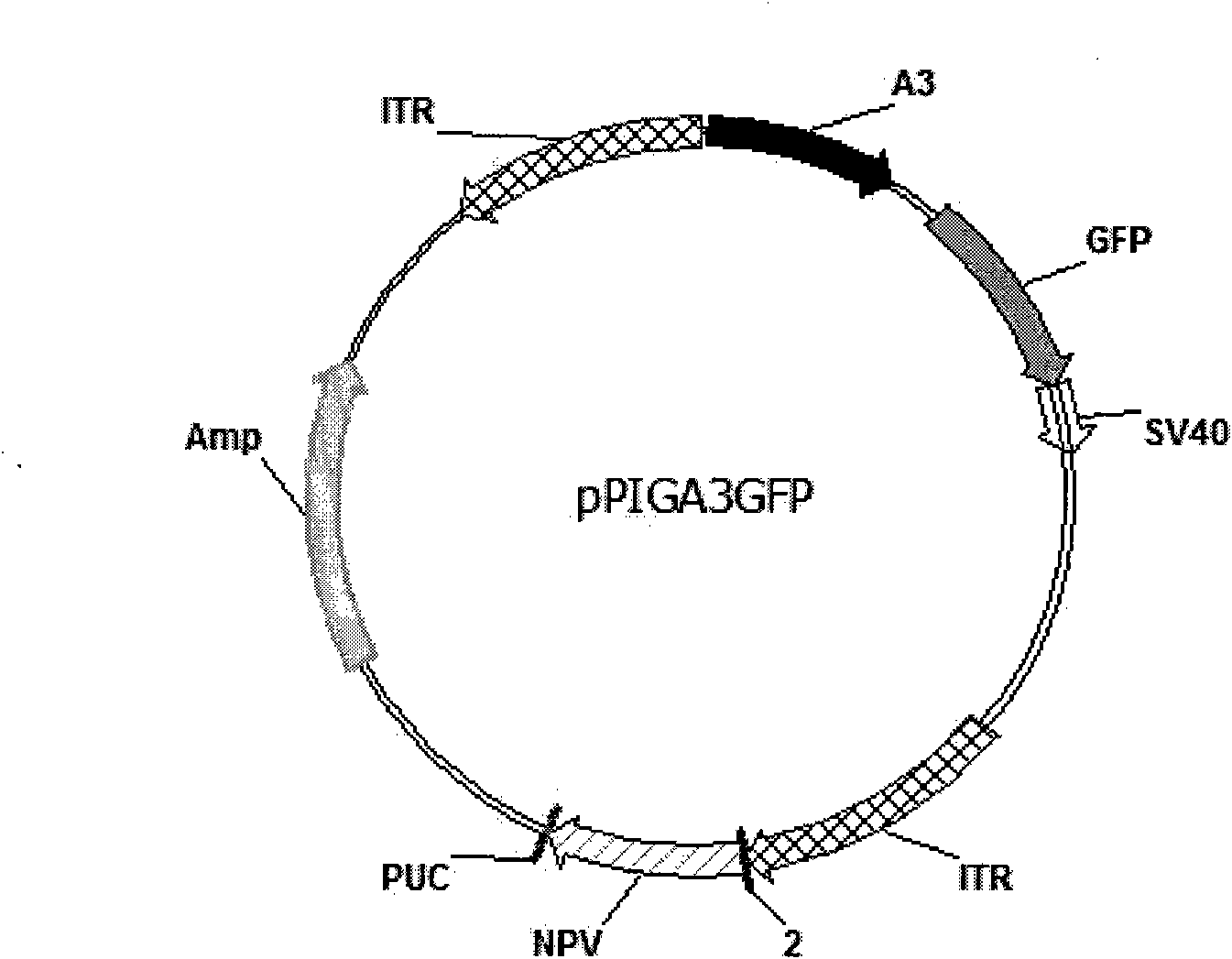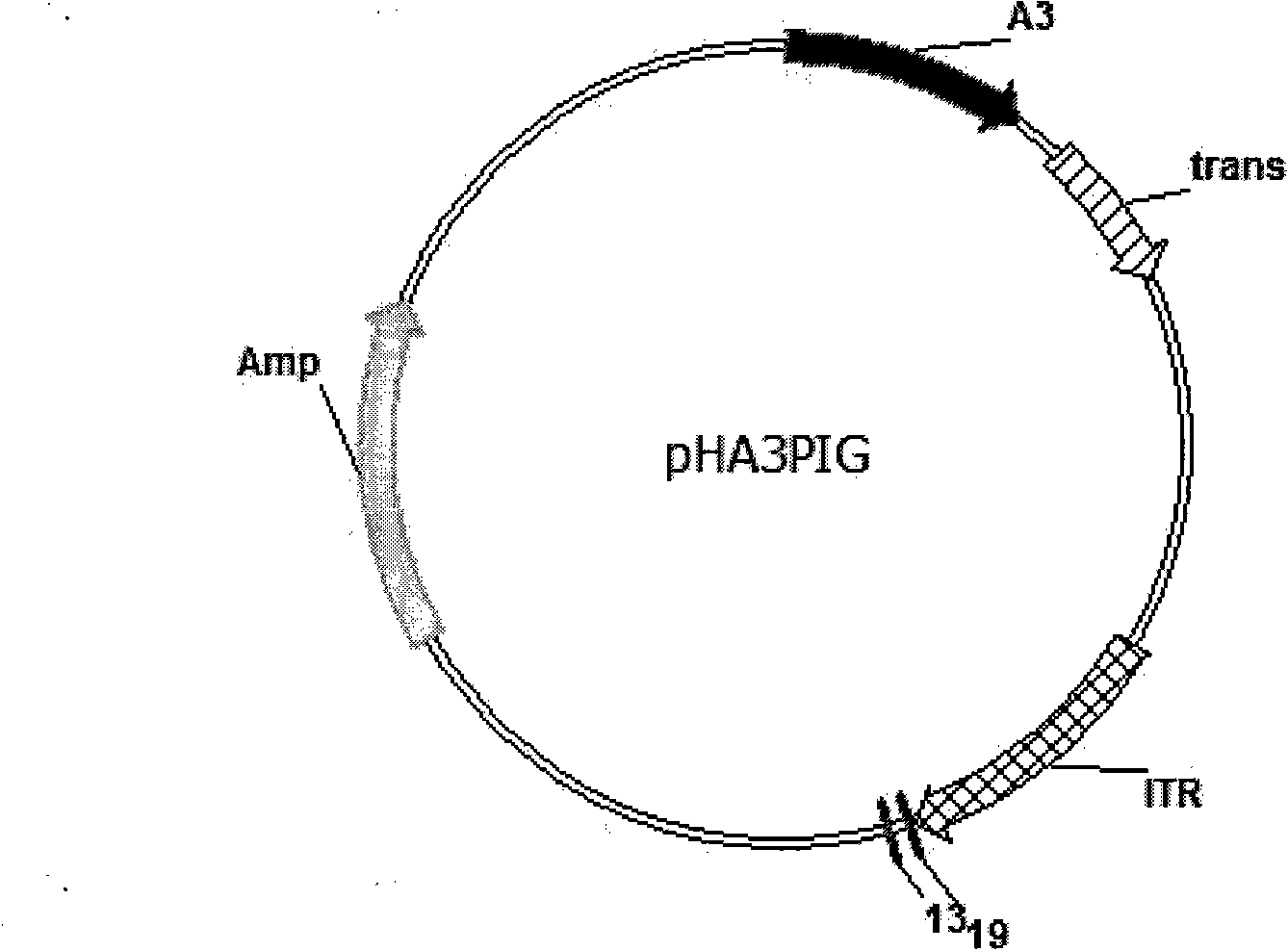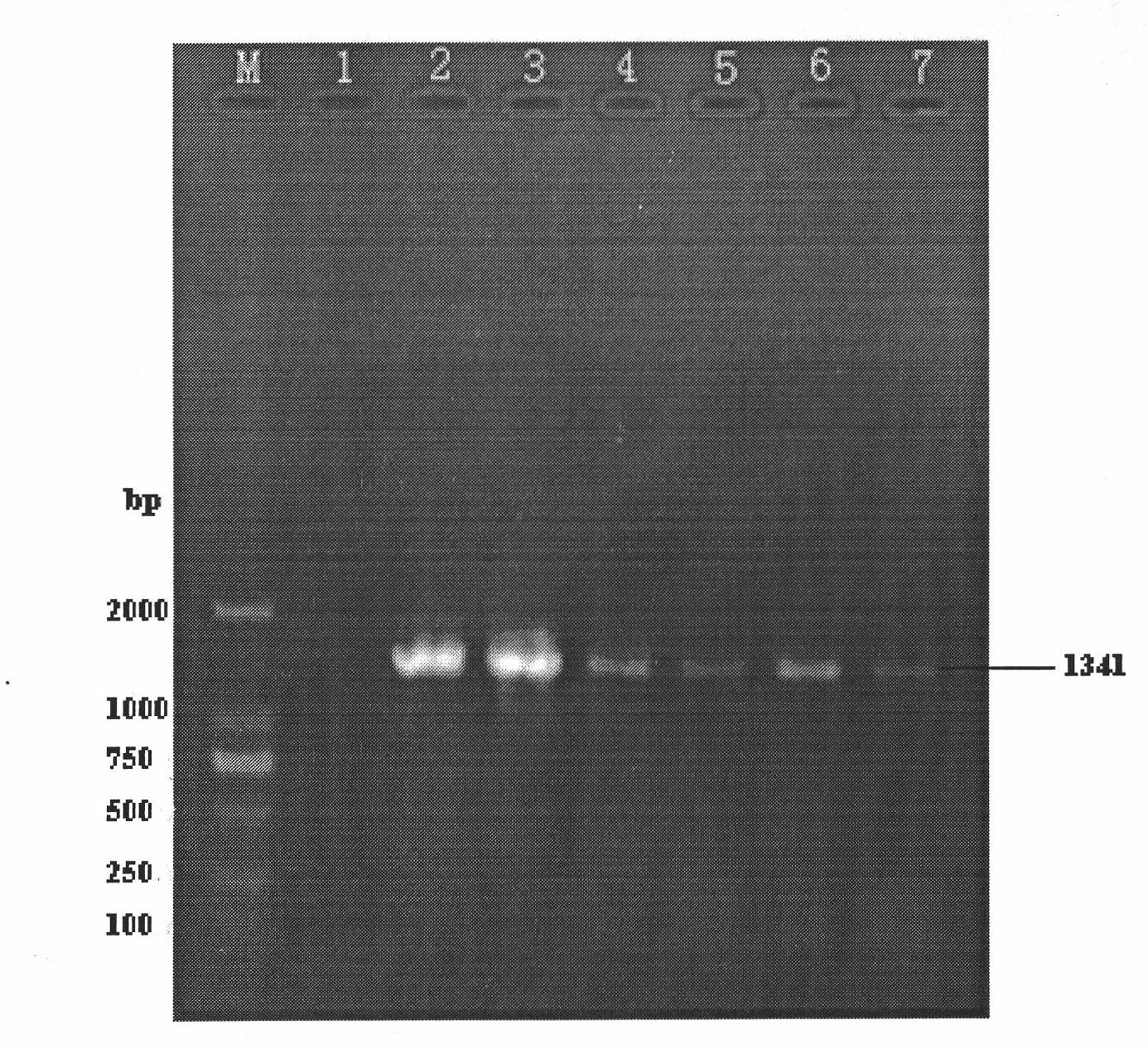Method for breeding Macropodus opercularis with transferred green fluorescent protein gene by using piggyBac transposons
A technology of green fluorescent protein and fork-tailed betta fish, which is applied in the introduction of foreign genetic material using vectors, recombinant DNA technology, animal husbandry, etc., to achieve the effect of broadening the research space
- Summary
- Abstract
- Description
- Claims
- Application Information
AI Technical Summary
Problems solved by technology
Method used
Image
Examples
Embodiment 1
[0018] Using the microinjection method, the piggyBac plasmid carrying the green fluorescent protein (EGFP) marker gene (such as figure 1 shown) and their helper plasmids capable of providing transposases (such as figure 2 shown) were mixed at a ratio of 10:1, the total concentration of the two plasmids was 30 ng / μl, the plasmids were dissolved in 0.1 mM phosphate buffer containing 1 mM sodium chloride, and then within 1 hour of spawning of the fork-tailed betta fish, the The microinjection method is used to introduce into the fertilized egg, the introduction site is the animal pole of the fertilized egg, and the total volume of introduction is 5nl. G from transgenic experiments 1 Transgenic betta fish stably expressing the EGFP marker gene were screened by fluorescence microscopy (Olympus, SZX12, Japan) from the embryonic development period of the generation of Betta fish. The excitation wavelength was 460nm-490nm, and the emission wavelength was 510nm-550nm.
[0019] A tot...
Embodiment 2
[0021] Using the microinjection method, the piggyBac plasmid carrying the EGFP marker gene and its helper plasmid capable of providing transposase were mixed at a ratio of 1:2. The total concentration of the two plasmids was 900ng / μl. The plasmid was dissolved in 2mM containing 8mM Cl Sodium chloride phosphate buffer solution, and then introduced into the fertilized eggs within 1 hour of spawning of the forktail betta, and the total volume of introduction was 0.8nl. From transgenic experiment G 1 Transgenic betta fish expressing the EGFP marker gene were screened by a fluorescence microscope (Olympus, SZX12, Japan) from the embryonic development period of the generation of Betta fish. The excitation wavelength was 460nm-490nm, and the emission wavelength was 510nm-550nm.
[0022] A total of 908 fertilized eggs were injected in the transgenic experiment, and 81 betta fish were obtained, G 1 Five fork-tailed bettas in the generation were transgenic fish. In the detected G 1 I...
Embodiment 3
[0024] Using the microinjection method, the piggyBac plasmid carrying the GFP marker gene ( figure 1 ) and its transposase-providing helper plasmid ( figure 2 ) were mixed at a ratio of 3:1, the total concentration of the two plasmids was 120ng / μl, the plasmids were dissolved in 0.5mM phosphate buffer containing 3mM sodium chloride, and then microinjected within 1 hour of forktail betta spawning In the fertilized egg, the introduction site is the animal pole of the fertilized egg, and the total volume of introduction is 2nl. G from transgenic experiments 1 From the embryonic development period of the fork-tailed betta, transgenic bettas expressing the EGFP marker gene were screened by a fluorescence microscope (Olympus, SZX12, Japan). The excitation wavelength was 460nm-490nm, and the emission wavelength was 510nm-550nm.
[0025] A total of 873 fertilized eggs were injected, and 119 fork-tailed betta fish were obtained, G 1 Six fork-tailed bettas in the generation were tra...
PUM
 Login to View More
Login to View More Abstract
Description
Claims
Application Information
 Login to View More
Login to View More - R&D
- Intellectual Property
- Life Sciences
- Materials
- Tech Scout
- Unparalleled Data Quality
- Higher Quality Content
- 60% Fewer Hallucinations
Browse by: Latest US Patents, China's latest patents, Technical Efficacy Thesaurus, Application Domain, Technology Topic, Popular Technical Reports.
© 2025 PatSnap. All rights reserved.Legal|Privacy policy|Modern Slavery Act Transparency Statement|Sitemap|About US| Contact US: help@patsnap.com



